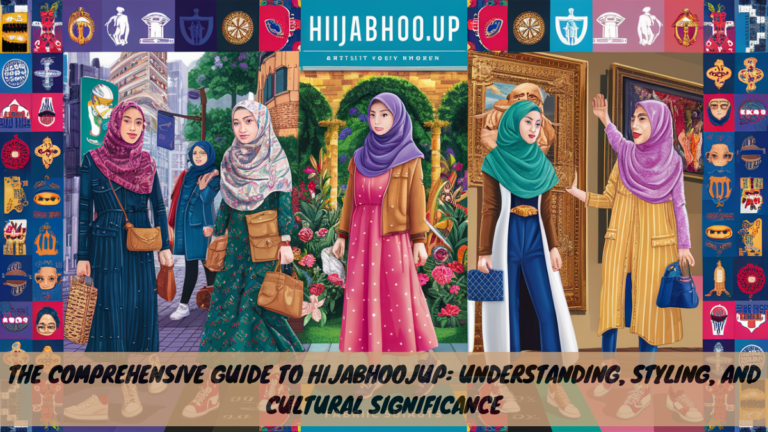The Timeless Craft of Tissariss – Weaving Tradition into Modernity
Tissariss stands as a testament to the artistry and cultural richness embedded in weaving traditions. This distinctive craft seamlessly merges historical techniques with contemporary innovation, creating a unique tapestry that celebrates both heritage and modern creativity.
Tissariss is a unique weaving art form that blends traditional techniques with modern creativity, producing textiles known for their intricate patterns and cultural significance, resonating globally in fashion and design.
This article delves deeply into the world of Tissariss, exploring its traditional roots, modern adaptations, key figures, and impact on the fashion industry.
Exploring the Essence of Tissariss
Tissariss is not merely a craft; it is an expression of cultural identity and artistic vision. At its core, Tissariss represents a bridge between ancient weaving practices and contemporary artistry, reflecting a deep respect for tradition while embracing new possibilities.
The Historical Foundations of Tissariss
The origins of Tissariss can be traced back to ancient weaving traditions that have been passed down through generations. Initially, these weaving techniques were deeply rooted in everyday life, with each pattern and fabric telling stories of the people and their environment. Over time, Tissariss evolved, integrating various cultural influences and adapting to changing tastes and technologies.
Cultural Significance and Symbolism
In Tissariss, each woven piece carries profound cultural significance. The patterns and colors used in Tissariss textiles are more than decorative—they are symbols of local traditions, beliefs, and historical events. Through its intricate designs, Tissariss preserves and celebrates the cultural heritage of its region, turning every fabric into a narrative of its own.
Traditional Weaving Techniques in Tissariss
The art of Tissariss weaving is characterized by its traditional techniques, which involve meticulous craftsmanship and a deep understanding of the craft. This section explores the core elements of traditional Tissariss weaving.
Craftsmanship and Methods
Tissariss weaving employs traditional looms that are central to the craft. Skilled artisans use these looms to create textiles with intricate patterns and textures. The process involves a rhythmic dance of hands and threads, where every motion is guided by years of expertise. The craftsmanship of Tissariss weavers is evident in the precision and beauty of their work.
Natural Dyes and Materials
A hallmark of Tissariss weaving is the use of natural dyes derived from local plants and minerals. These dyes not only enhance the visual appeal of the textiles but also establish a connection between the weavers and their natural surroundings. The use of eco-friendly materials reflects a commitment to sustainability and traditional practices.
Patterns and Motifs
Patterns in Tissariss textiles often draw inspiration from nature and folklore. These motifs are not just decorative elements but are imbued with cultural and historical meanings. Each design serves as a visual representation of the stories and traditions that have shaped the craft of Tissariss.
Modern Innovations in Tissariss Weaving
While Tissariss retains its traditional essence, modern innovations have introduced new dimensions to this ancient craft. This section examines how contemporary techniques are enhancing and expanding the possibilities of Tissariss weaving.
Digital Tools and Techniques
The integration of digital design tools has revolutionized Tissariss weaving. Artisans now use software to experiment with patterns, colors, and textures, pushing the boundaries of traditional designs. This fusion of technology and tradition allows for greater creativity and precision in the creation of Tissariss textiles.
Sustainable Practices
Sustainability has become a significant focus in the textile industry, and Tissariss is no exception. Many contemporary weavers are adopting eco-friendly practices, such as using sustainable materials and reducing waste. These efforts align with global trends towards environmental responsibility and enhance the appeal of Tissariss textiles to conscious consumers.
Global Reach through Social Media
Social media has provided a platform for Tissariss weavers to reach a global audience. Artisans use social media to showcase their work, connect with enthusiasts, and share the stories behind their creations. This increased visibility helps to promote Tissariss on an international scale, fostering appreciation and interest in the craft.
Notable Figures in Tissariss Weaving
Several influential weavers have made significant contributions to the art of Tissariss. Each of these individuals brings their unique perspective and expertise to the craft, shaping its evolution and preserving its heritage.
Aman Gupta: Innovator and Tradition-Bearer
Aman Gupta is known for his ability to blend traditional motifs with contemporary design. His work reflects a deep respect for cultural heritage while introducing modern elements that appeal to today’s audience. Gupta’s designs exemplify the harmonious integration of tradition and innovation.
Leena Shah: A Visionary in Color and Texture
Leena Shah is celebrated for her innovative use of color and texture in Tissariss weaving. Her designs combine traditional patterns with modern aesthetics, creating textiles that are both visually striking and culturally resonant. Shah’s work highlights the versatility and relevance of Tissariss in the contemporary art world.
Rajesh Kumar: Preserving Traditional Techniques
Rajesh Kumar is dedicated to preserving the traditional techniques of Tissariss weaving. His efforts to teach and mentor younger generations ensure that the craft remains vibrant and authentic. Kumar’s commitment to the art form plays a crucial role in maintaining the integrity of Tissariss.
Tissariss in the Fashion Industry
Tissariss weaving has made a notable impact on the fashion industry, offering unique textiles that captivate designers and consumers alike. This section explores how Tissariss is influencing fashion and its role in contemporary style.
From Loom to Runway
Tissariss textiles are increasingly featured in fashion shows and collections around the world. Designers incorporate traditional weaving techniques into their creations, blending them with modern styles to produce garments that celebrate both heritage and innovation. This fusion results in fashion pieces that are both artistic and wearable.
The Appeal of Eco-Friendly Fashion
The sustainable aspects of Tissariss weaving resonate with the growing demand for eco-friendly fashion. The use of natural dyes and materials aligns with the values of environmentally conscious consumers, making Tissariss a popular choice for those who seek stylish and sustainable clothing options.
Influencer Impact and Fashion Trends
Social media influencers and fashion bloggers have played a significant role in promoting Tissariss. Their coverage of Tissariss textiles highlights their unique qualities and cultural significance, driving interest and appreciation in mainstream fashion circles.
The Future of Tissariss Weaving
The future of Tissariss weaving lies in its ability to adapt and evolve while preserving its traditional roots. This section outlines the strategies and initiatives involved in ensuring the continued relevance of Tissariss.
Educational and Community Initiatives
Educational programs and community workshops are essential for preserving the art of Tissariss. By teaching traditional techniques and fostering a new generation of weavers, these initiatives help to sustain the craft and keep it alive for future generations.
Collaborations and Innovation
Collaborations between traditional weavers and contemporary designers encourage innovation while honoring the heritage of Tissariss. These partnerships create opportunities for creative experimentation and ensure that Tissariss remains relevant in a rapidly changing world.
Showcasing Tissariss at Art Events
Art fairs and exhibitions provide valuable platforms for showcasing Tissariss textiles. These events connect artisans with potential buyers and enthusiasts, promoting the craft and supporting the livelihoods of weavers.
FAQs About Tissariss
Q1: What is Tissariss?
Tissariss is a traditional weaving art form that combines historical techniques with modern innovations. It is known for its intricate patterns and cultural significance.
Q2: How has Tissariss evolved over time?
Tissariss has evolved by incorporating modern techniques such as digital design and sustainable practices while preserving its traditional roots. This evolution enhances both the craft and its appeal.
Q3: Who are some influential Tissariss weavers?
Notable Tissariss weavers include Aman Gupta, known for blending tradition with contemporary design; Leena Shah, celebrated for her innovative use of color and texture; and Rajesh Kumar, dedicated to preserving traditional techniques.
Q4: How is Tissariss impacting the fashion industry?
Tissariss is influencing the fashion industry by offering unique textiles that merge traditional techniques with modern styles. Its eco-friendly materials and cultural significance appeal to both designers and consumers.
Q5: What efforts are being made to preserve Tissariss?
Efforts to preserve Tissariss include educational programs, collaborations between traditional and modern artists, and showcasing the craft at art fairs and exhibitions. These initiatives ensure that Tissariss continues to thrive and evolve.
Conclusion
Tissariss weaving is a vibrant art form that bridges the past and present, combining traditional techniques with modern creativity. Through its intricate patterns, sustainable practices, and influential figures, Tissariss continues to capture the essence of cultural heritage while embracing contemporary innovations. By understanding and appreciating the depth of Tissariss, we celebrate its enduring legacy and its role in shaping the future of weaving and design.







